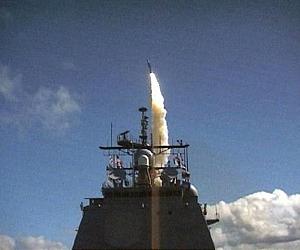| . |  |
. |
New Delhi (UPI) Sep 30, 2010 Indian defense scientists are investigating the failure of the surface-to-surface Prithvi-II ballistic missile, which remained on the launch pad during a trial in Chandipur, Orissa. Observers said the short-range Indian-developed, 4.6-ton nuclear-capable missile became enveloped in orange smoke and the launch was aborted, officials from the Defense Research and Development Organization said. "The failure to lift Prithvi-II was due to a snag either in the main missile or the sub-system, including the launcher," a DRDO spokesman said. The test was conducted at the integrated test range, 140 miles from the Orissa state capital Bhubaneswar. It was part of a series being conducted for the military, which has already inducted the missile into its arsenal, so the failure was particularly disappointing, some media reports said. Retired Air Commodore Jasjit Singh, a military analyst, said the recent failure should be put into perspective. With a lot of computer simulation available, there needn't be as many as 31 tests for a new missile as there were around 20 or 30 years ago, he said. The past four test firings, all within the year, have been successful. "We claim too much, too early and perhaps that is a desire to show we are successful," he said. "Don't expect that every time we fire a missile it must work perfectly, that would be wrong. We must expect failures." The 28-foot-long. single-stage liquid-fuel Prithvi II has been developed by the DRDO and manufactured by Bharat Dynamics, a major munitions and missile manufacturer in Hyderabad, Andhra Pradesh. The missile, capable of a 2,200-pound payload, was first test-fired successfully in 1996 for the Indian air force and its range has been extended over the years from 135 to around 190 nautical miles through an improved aided inertial navigation system. The launcher for the Prithvi-II is the 8x8-wheel Transporter Erector Launcher, made by Indian vehicle maker Tatra. A two-stage ship-to-surface solid-fuel Prithvi-III is under development, capable of flexible delivery. It can deliver a 2,200-pound payload around 190 miles, a 1,100-pound payload up to 325 miles or a 550-pound payload around 405 miles. A Prithvi-III was first test-fired in 2000 from the naval vessel Subhadra, a Sukanya class patrol ship. The Prithvi series of missiles is part of India's indigenous Integrated Guided Missile Development Program initially developed more than 20 years ago. Other missiles produced or under development are the Agni, Trishul, Akash and Nag, as well as a cruise missile. In July, India successfully test-fired an indigenously developed Astra, its first short-range air-to-air missile, under poor weather conditions during the day and night. It also was the first night test firing and the first inclement weather launch, for an Astra, the DRDO said. The Astra will augment the air force's other missiles, the French-made Matra Super 530D and the Russian-made AA-10 Alamo-C and AA-12 Adder. India also imports Israeli Python and Derby air-to-air missiles.
Share This Article With Planet Earth
Related Links Learn about missile defense at SpaceWar.com All about missiles at SpaceWar.com
 Raytheon Awarded Contract For Standard Missile-3 Block IIA
Raytheon Awarded Contract For Standard Missile-3 Block IIATucson AZ (SPX) Sep 29, 2010 The Missile Defense Agency (MDA) awarded Raytheon a $175 million contract for the Standard Missile-3 Block IIA cooperative development program with Japan. The contract will provide continued funding for engineering and development efforts for the SM-3 Block IIA missile through the preliminary design review of the all-up-round, scheduled for early 2011. The contract also includes an option ... read more |
|
| The content herein, unless otherwise known to be public domain, are Copyright 1995-2010 - SpaceDaily. AFP and UPI Wire Stories are copyright Agence France-Presse and United Press International. ESA Portal Reports are copyright European Space Agency. All NASA sourced material is public domain. Additional copyrights may apply in whole or part to other bona fide parties. Advertising does not imply endorsement,agreement or approval of any opinions, statements or information provided by SpaceDaily on any Web page published or hosted by SpaceDaily. Privacy Statement |